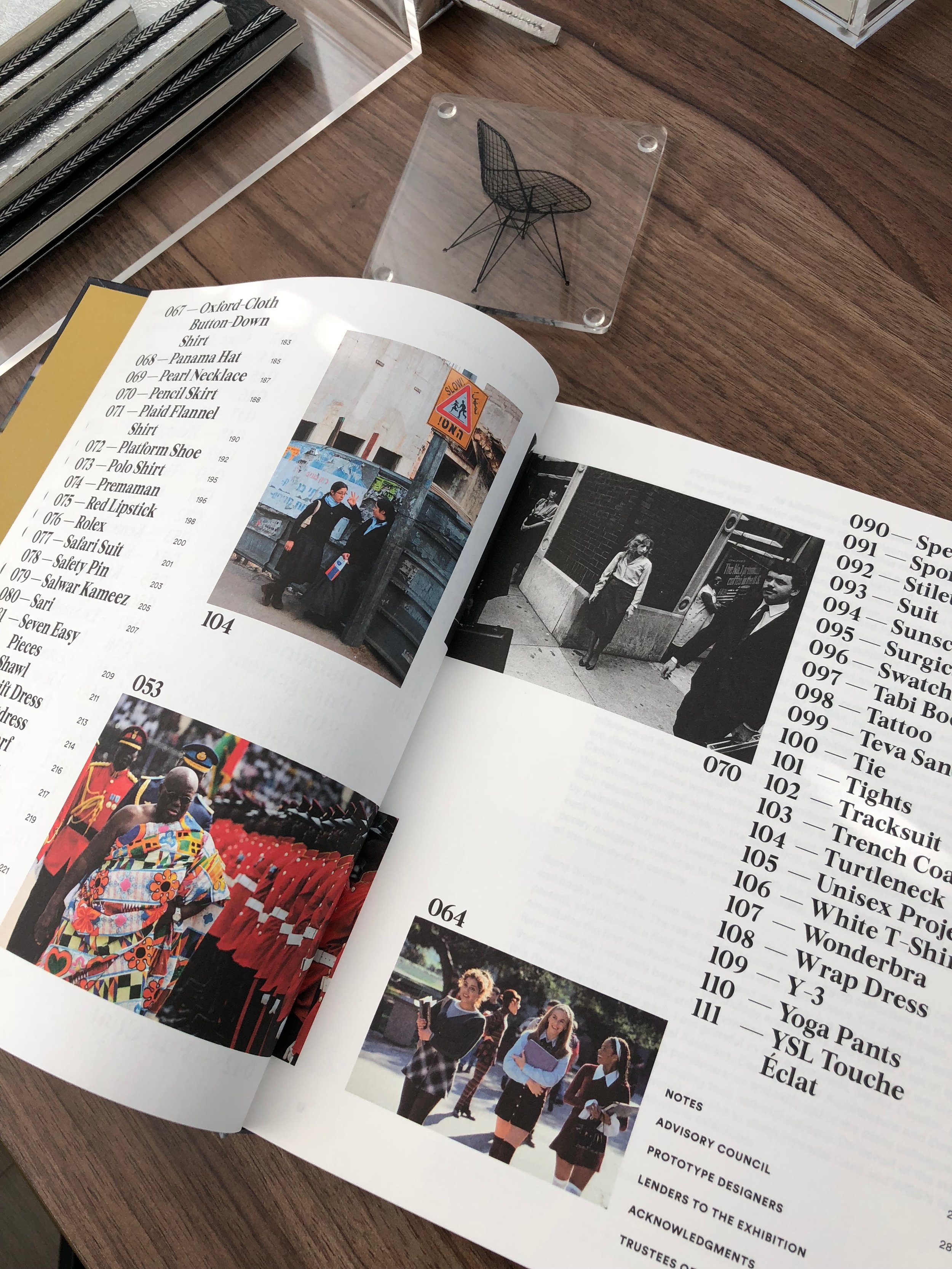What is it about fashion that makes the art world so nervous? No doubt the subject has been cast a peripheral role in the scholarship of visual arts and culture even as fashion remains one of the most intimate aesthetic expressions we all make. In the Museum of Modern Art’s recent exhibition Items: Is Fashion Modern? curators Paola Antonelli and Michelle Millar Fisher took up the challenge of organizing MoMA’s first exhibition on fashion in several decades. On its face, the idea of a big blockbuster show examining fashion seems very timely and even necessary for MoMA, especially as the popularity of the Metropolitan Museum’s annual costume gala and exhibition has continued to push the conversation around fashion as art into the public discourse. At the same time, the intersection of art and fashion in the practices of high profile artists such as Marina Abramovic, Takashi Murakami, Cindy Sherman, Vanessa Beecroft, and others has pushed the sometimes uncomfortable conversation around fashion’s role in the art world into academic circles. The topic has also come up a number of times in this blog, and I refer you to the list of further readings to explore at the end of this post.
Each of the 111 objects chosen for the exhibition represent a check-list of "garments that changed the world" in the modern era represented by the MoMA art collection.
“In the exhibition and in this catalogue, garments created for the benefit of the many such as the white t-shirt or the dashiki) coexist with rarefied fashion episodes for the delight of a few (Martin Margiela’s Tabi footwear series, for instance, or Yves Saint Laurent’s Le Smoking). What they have in common is their influence on the world, whether direct and immediate, as evidenced by millions of purchases, or mediated and metabolized at first by institutional and financial elites. Thanks to the cross-pollination made possible by physical and cultural migrations, rampant appropriation, and the disseminating power of media both old and new, nowhere do high and low engage in so productive a conversation as in fashion.”
When I visited the exhibition last month in New York, I was immediately struck by how cleverly the show had resolved avoiding the typical narrative of exhibitions engaging fashion that focus on artist/designer careers, or thematic approaches that intersect moments in art and fashion history. Instead, in very typical and minimal MoMA style, audiences were greeted with a massive wall of simple black text on a white wall listing a 111 item "check-list of fashion." Walking through the exhibition, the items were presented and staged as art objects, yes, but firmly within the spaces of the great white cube, and there was the constant awareness of questioning how the item fit (or perhaps did not) in the overall scope of the museum. Antonelli, reflecting on the carefully plotted curatorial vision for the show in the catalogue accompanying the exhibition, emphasizes the ways in which she wants to address the role of fashion as a conceptual question first and foremost, examining how fashion objects work within models and debates concerning modernism and the ethos of the avant-garde.
The catalogue itself is an important compendium to the exhibition and is presented almost as an encyclopedia, beginning with the introductory essay by Antonelli and then followed by individual entries of 500-1000 words for each of the 111 alphabetically ordered checklist items. Each entry is carefully and expertly written, offering context, analysis, and fantastic notes that can be followed up for further research. Importantly, the entries move beyond historical description and connect back to the question of modernism posed by the book and exhibition title. Interspersed throughout the entries are creative photo essays produced by five selected photographers who were asked to interpret and offer their own point of view in representing the items. These alone are worthy of reflection and further analysis not directly offered by the book's authors.
One of the objects that immediately captured my attention when I visited the show (see my photo gallery below), and is also well analyzed in the book, is the biker jacket. Associated with the subculture of motorcycle gangs, the punk movements of the 1970-80’s, along with the aura of rebellion popularized by screen legends like Marlon Brando, few items of fashion singularly express such subversive, anti-establishment, and outsider qualities. As the entry explains: “A biker jacket is a readymade exoskeleton, replete with instant meaning…Its mystique owes much to a history of provocative owners, but its appeal is equally indebted to its enigmatic design, in which streamlined sophistication is held in tension with chaotic symmetry” In the exhibition, the biker jacket was featured alongside the balaclava—a knitted head covering covering most of the face— Doc Martens, and head coverings/shawls, offering a fantastic and provocative juxtaposition of clothing that tends to be associated with violence, fear, concealment, and intimidation.
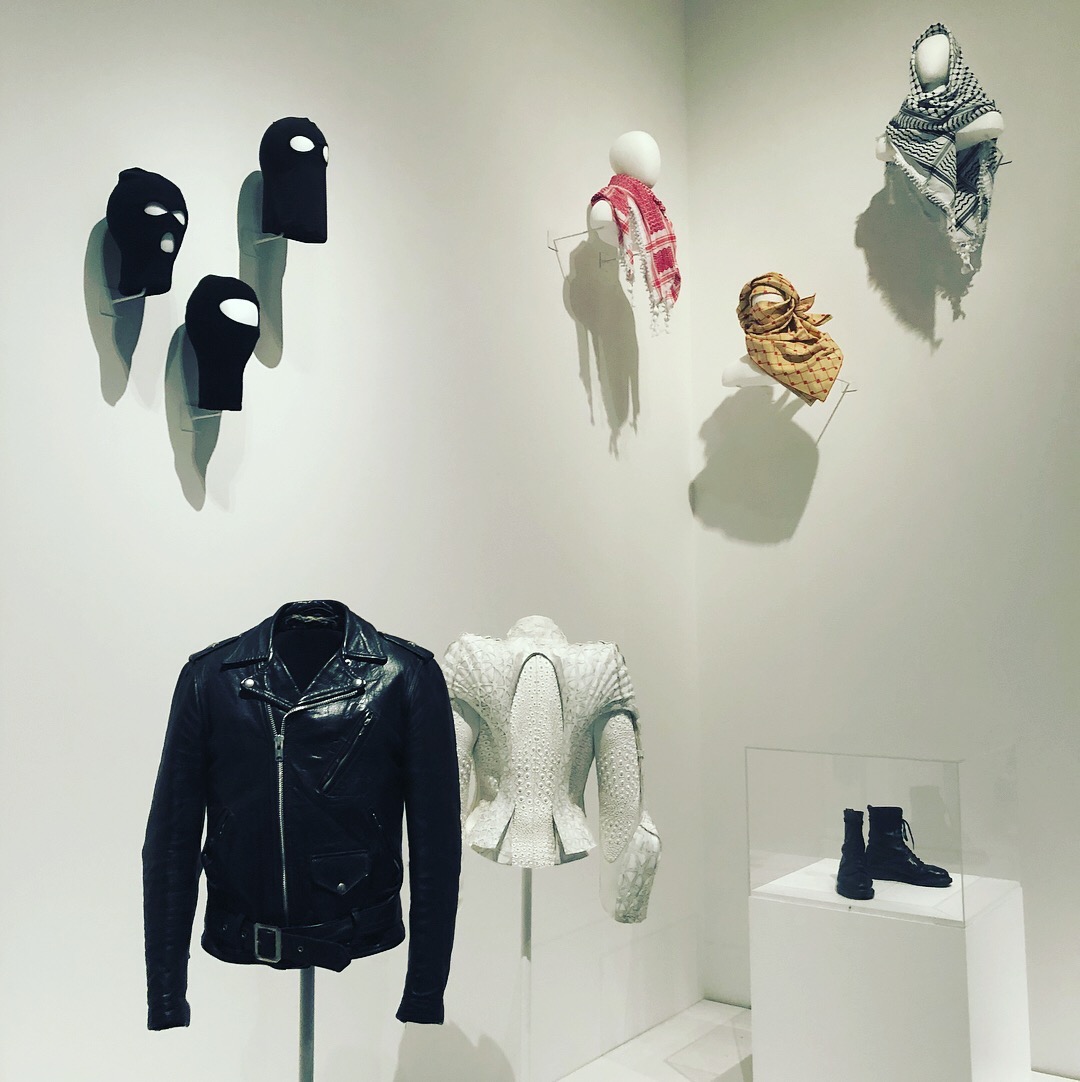
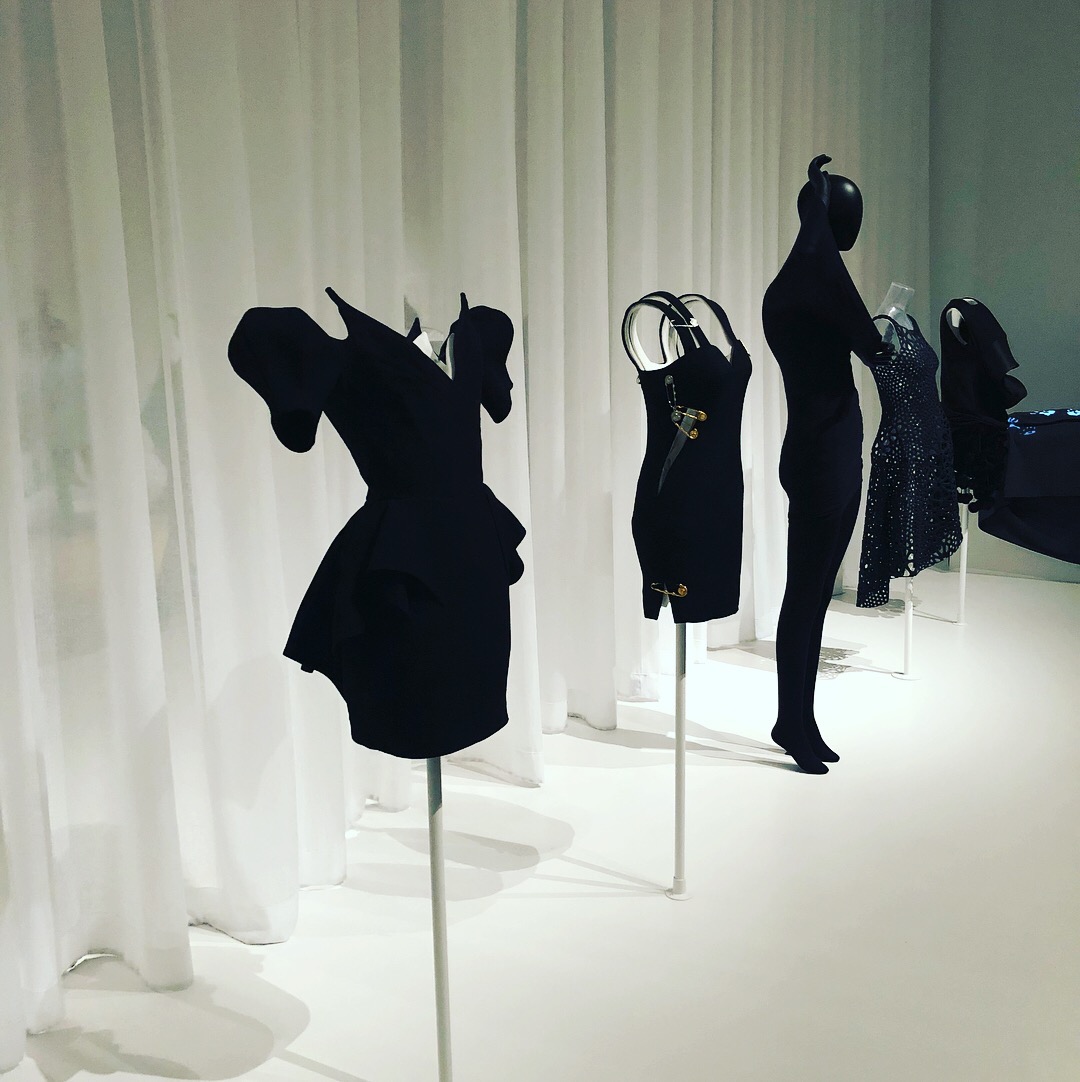
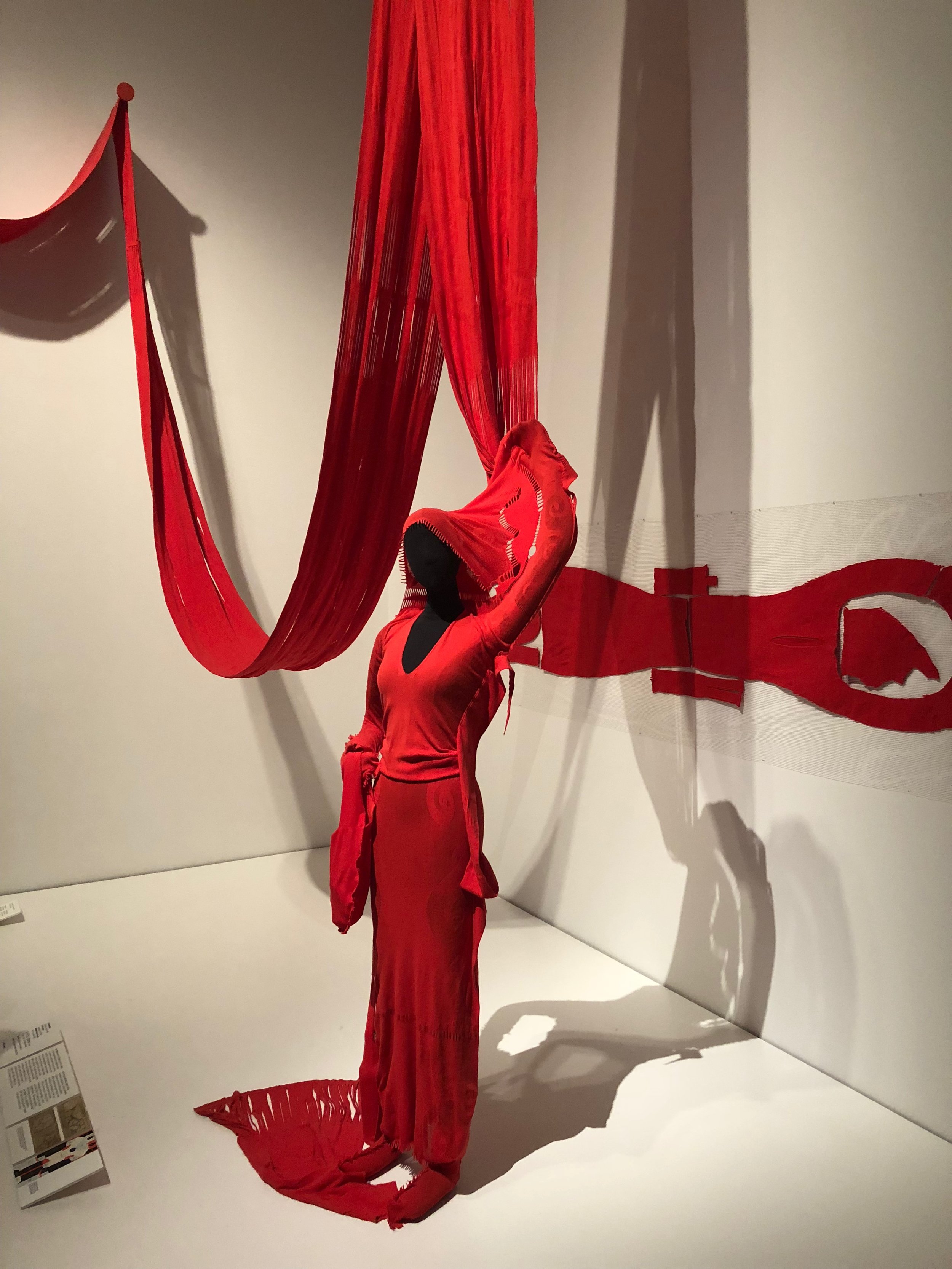
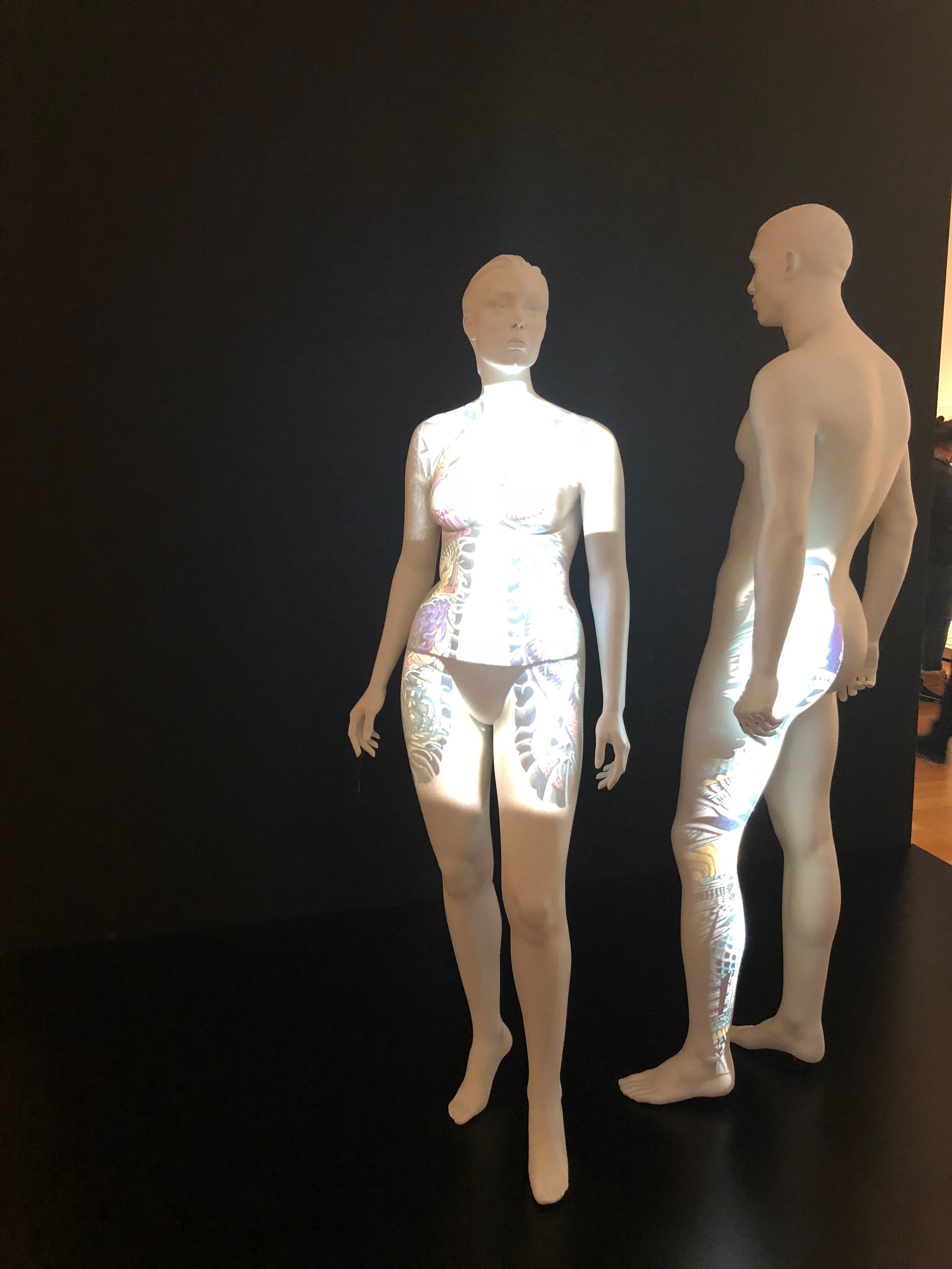
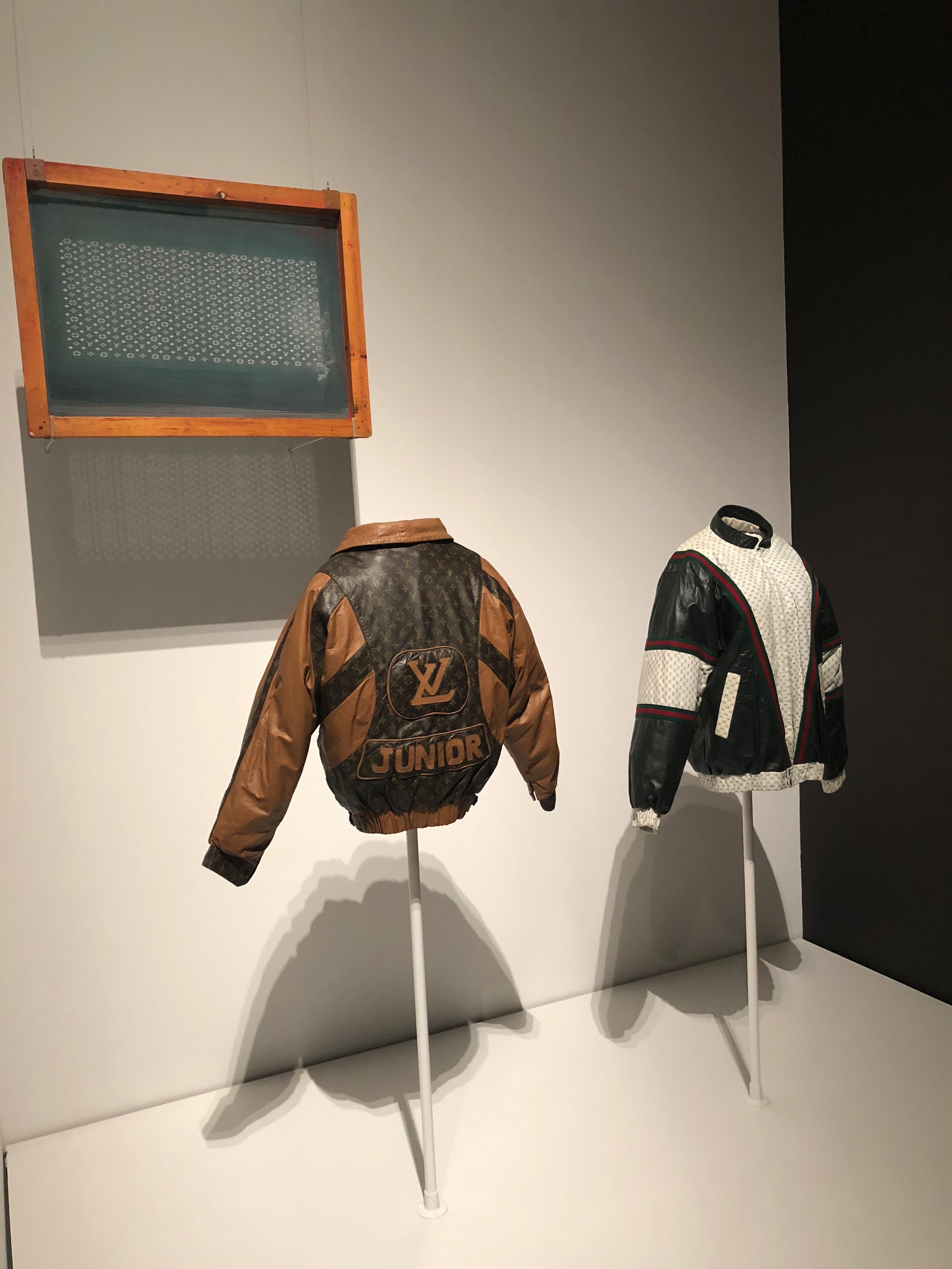
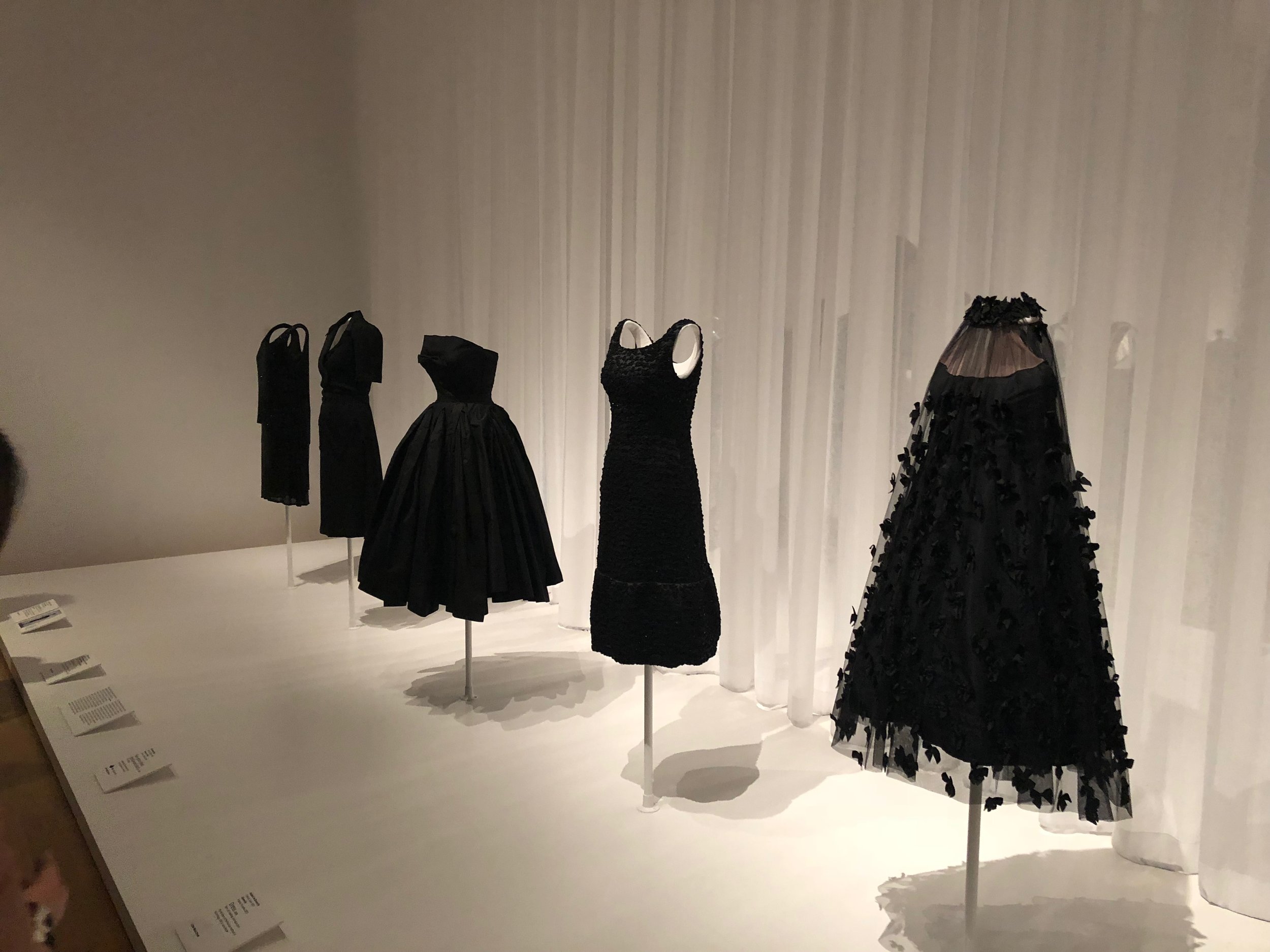
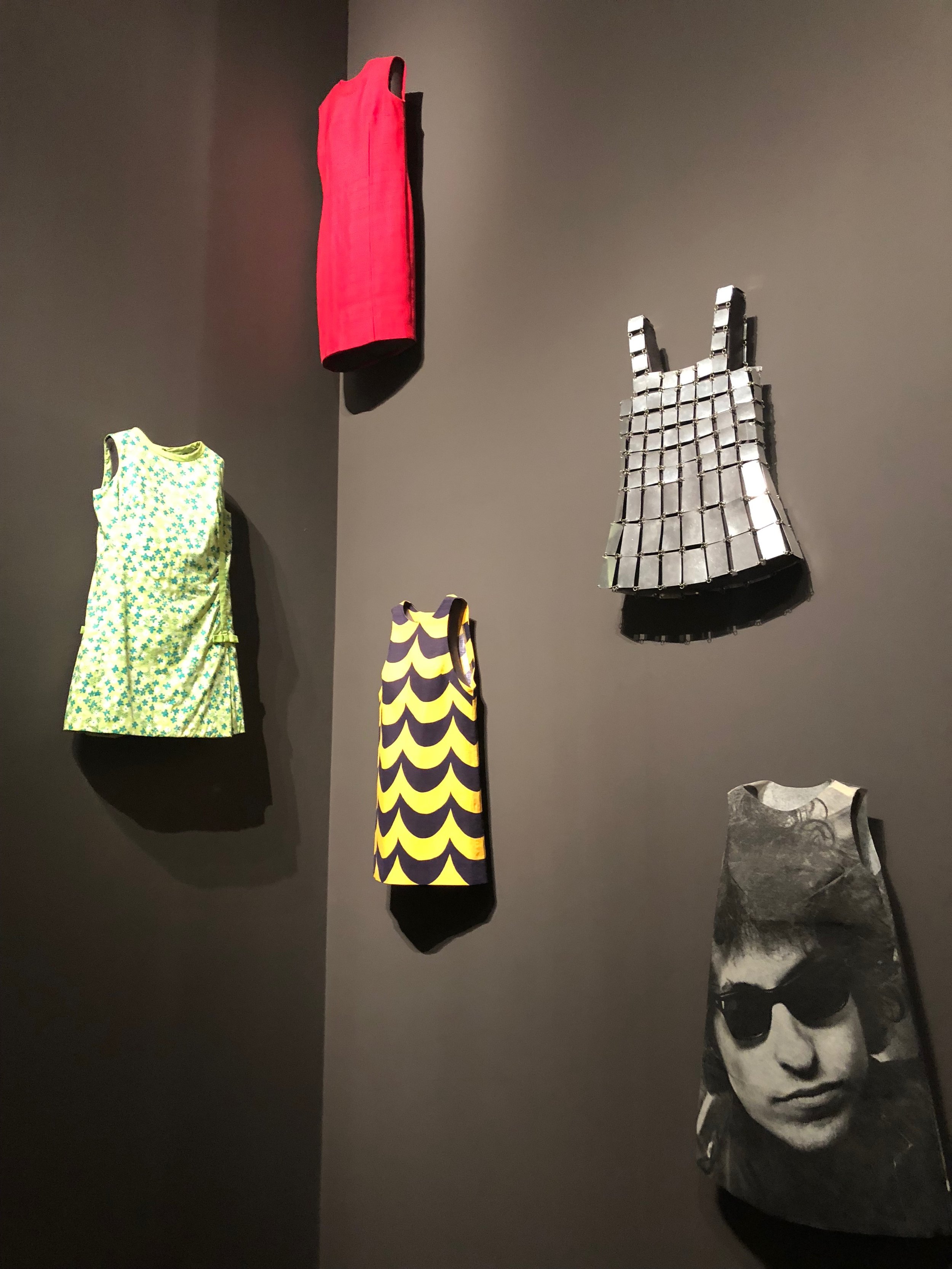
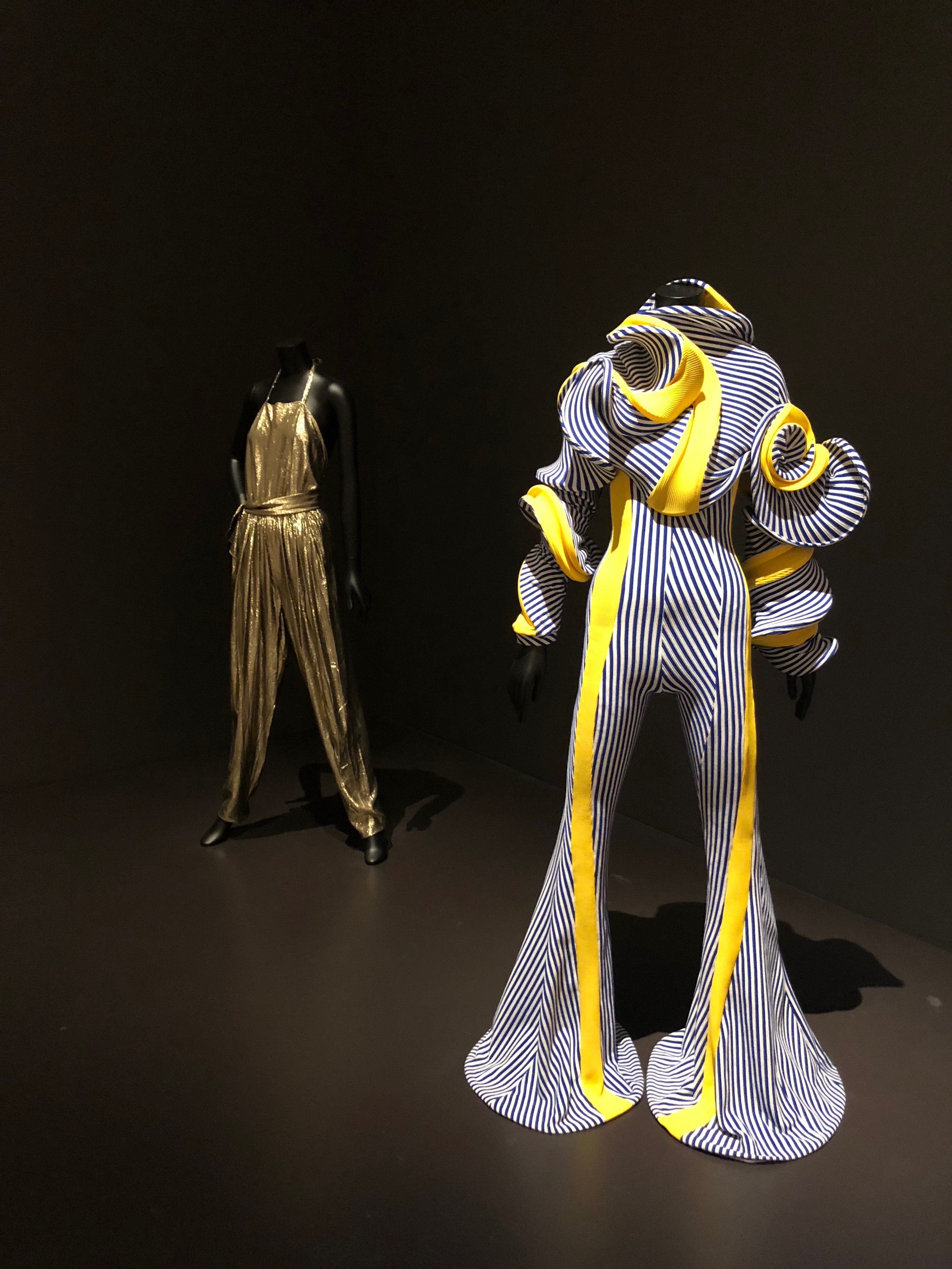
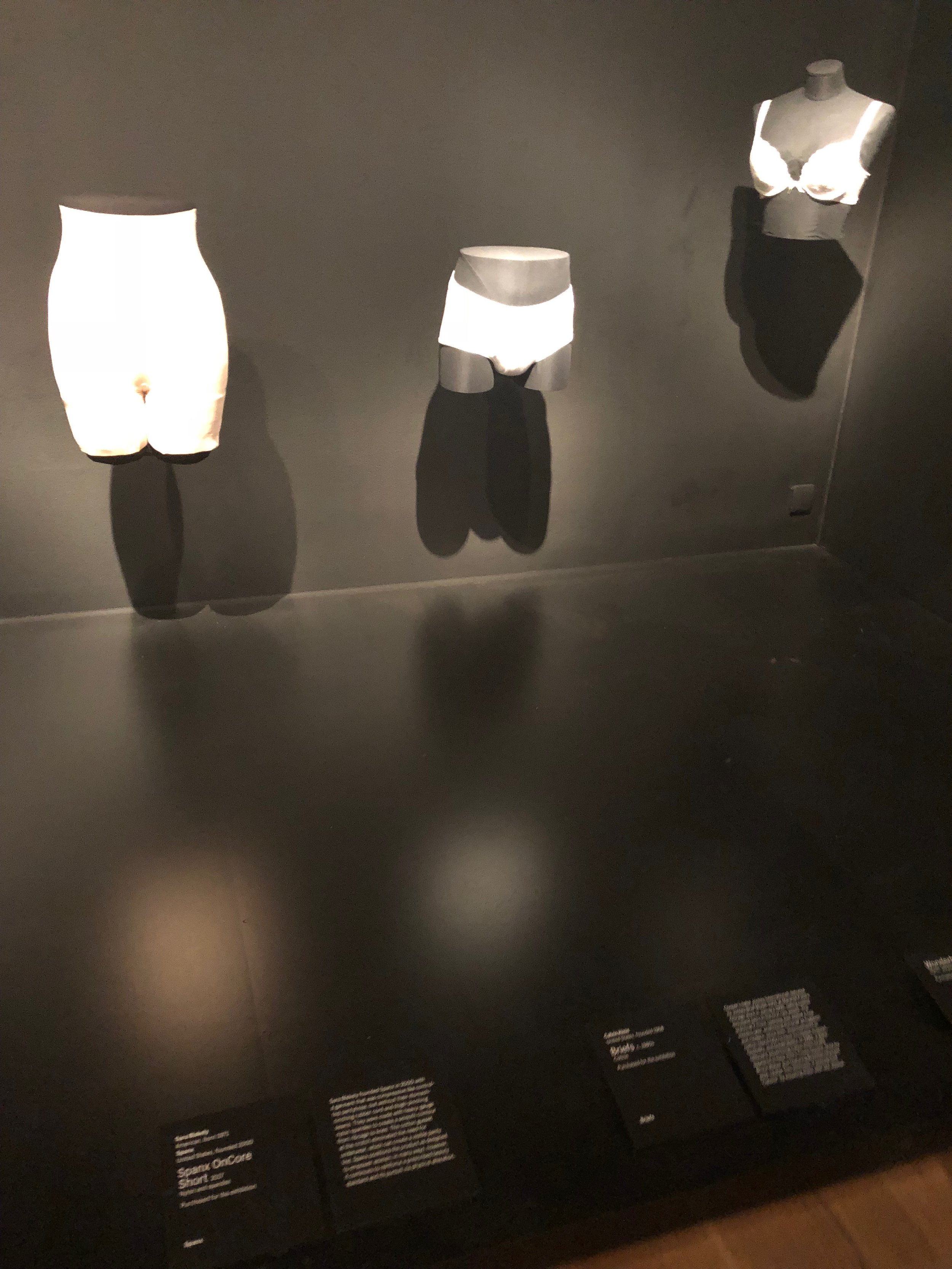
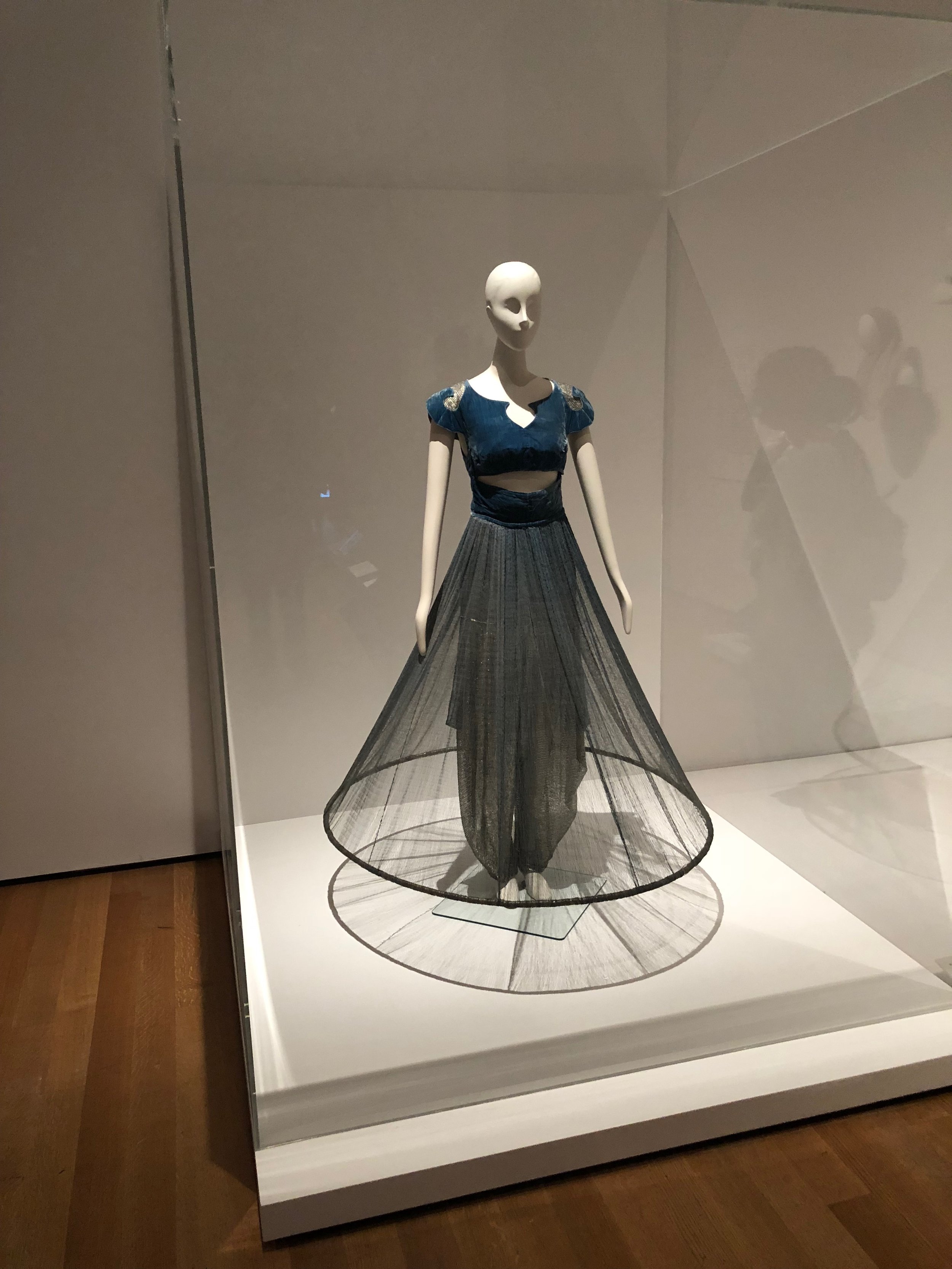
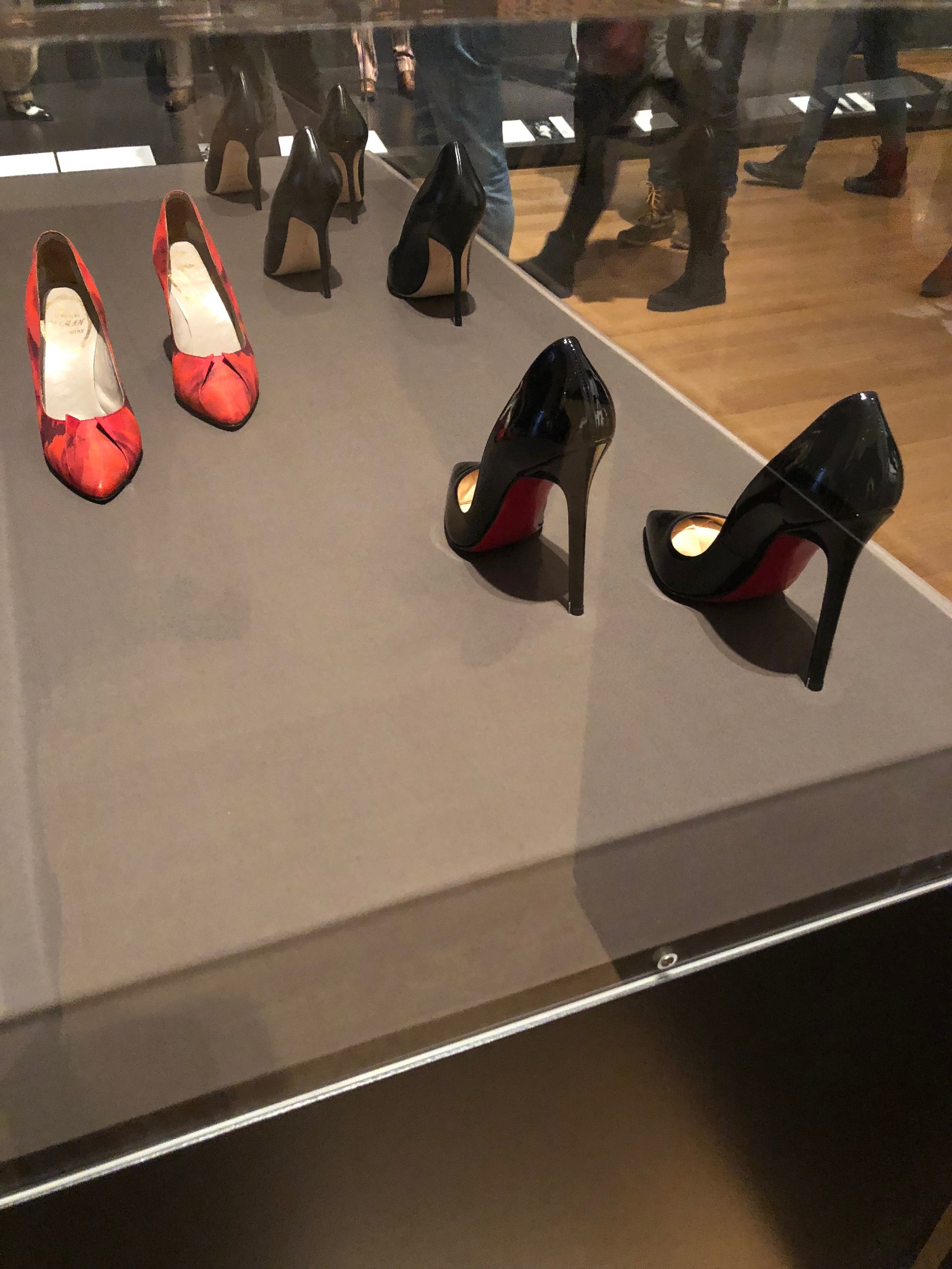

I purchased the catalogue as a sourcebook for a special topics course I will be teaching this fall at KPU looking at the intersection of art and fashion from an art historical perspective. In my own research, the subject of fashion has become increasingly important, especially as I move to consider how recent forces within the global art market have adopted elements of fashion, lifestyle, and subculture branding to extend and create new audiences for art. At the same time, the subject of fashion is a recurring topic in courses where I explore urban visual environments. In my Introduction to Visual Art, Urban, and Screen Culture course, for example, the exploration of case studies in street and graffiti art, along with hip-hop and punk culture, are informed by subcultures where fashion plays a critical and even guiding role. To be sure, there is a great deal to be gained in the study and instruction of fashion via an art historical and visual arts lens, and the MoMA book and exhibition have provided the perfect launching off point.
Related Blog Posts:
PERFORMING FASHION AS ART: DAPHNE GUINNESS FOR ALEXANDER MCQUEEN
UNPACKING THE FASHION/ART DIVIDE: SOME REFLECTIONS
QUICK COMPARE | CINDY SHERMAN, MARTHA ROSLER, AND VOGUE MAGAZINE
LOCATION| NYC AND THE MET'S PUNK: CHAOS TO COUTURE EXHIBITION
AN ARCHITECT OF CLOTH: CHARLES JAMES "BEYOND FASHION" AT THE MET





